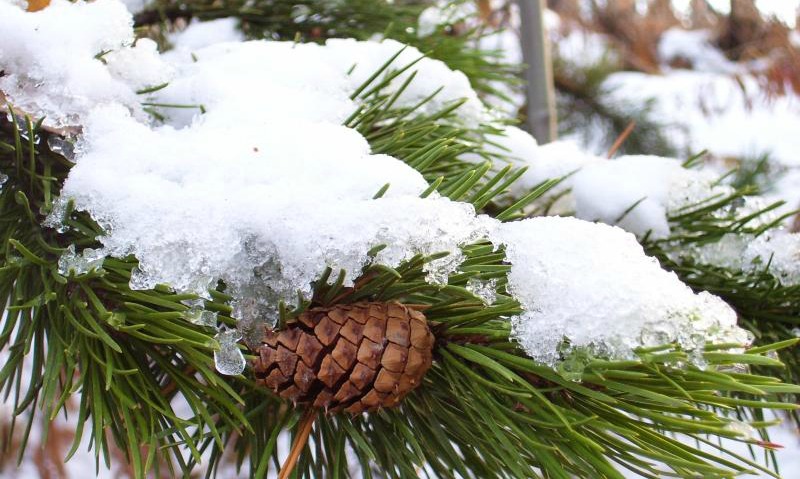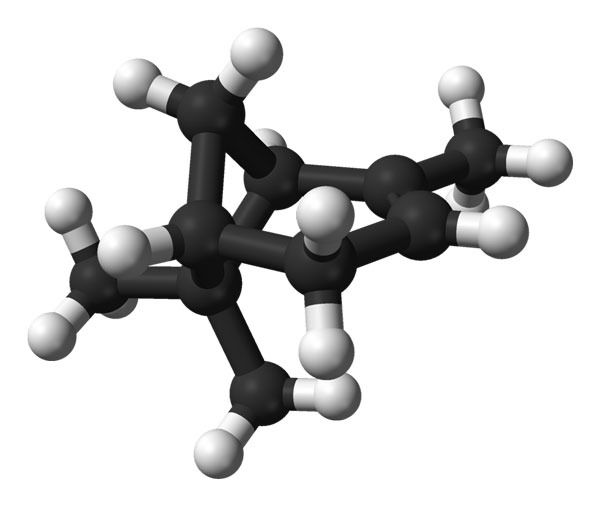
Love the smell of pine trees?
Especially at this time of year, many say they enjoy the smell of a pine, spruce, or fir tree. Whether it’s a holiday tree in your home, or a grove of conifers in the forest, these trees smell sharp, sweet, and refreshing. What gives pine trees and other conifers their scent? Most of it is due to chemical compounds called terpenes.
Terpenes are composed of carbon (C) and hydrogen (H) atoms. And they’re built from different numbers and kinds of molecules, including pinene, which has a piney odor, and limonene, which smells citrusy. These two molecules, among other things, give conifer trees their distinctive scent.

More about terpenes
Terpenes are abundant in conifer resin, and when a tree’s bark is damaged, the resin flows out, hardens, and protects the tree. The terpenes in this resin act as deterrents to herbivores, such as bark beetles that might otherwise feed on the tree, and also some types of fungi. Terpenes are also released into the atmosphere over conifer forests on hot summer days, where they can play a role in cloud seeding. Some scientists think that the resulting clouds that form may help to block sunlight and cool the forest.
Several products for human consumers are produced from terpenes. One of the most widely known of these is turpentine, which is used as a solvent to thin out oil-based paints. Terpenes are also used as fragrances in cleaning products and medicines such as anti-malarial and anti-cancer drugs.
According to this article by the Royal Society of Chemistry, scientists have begun to explore terpenes as replacements for petroleum-based chemicals for the production of things such as plastics and fuels. Terpenes are hydrocarbons much like petroleum products, but they could be a potentially renewable resource, unlike petroleum. Unfortunately, conifers don’t produce great quantities of terpenes, so it may not be economically feasible. However, scientists may genetically engineer microorganisms to produce large amounts of terpenes in the future. This area of research is currently active.
Just something to think about as you gaze at your Christmas tree.
Bottom line: Pine, spruce, and fir trees – all widely used for decorating during the Christmas season – produce terpenes, which give them a distinctive and refreshing scent. The terpenes in the conifer sap help defend the trees from herbivores like bark beetles and fungal pathogens.
Are you enjoying EarthSky? Sign up for our free daily newsletter today!











